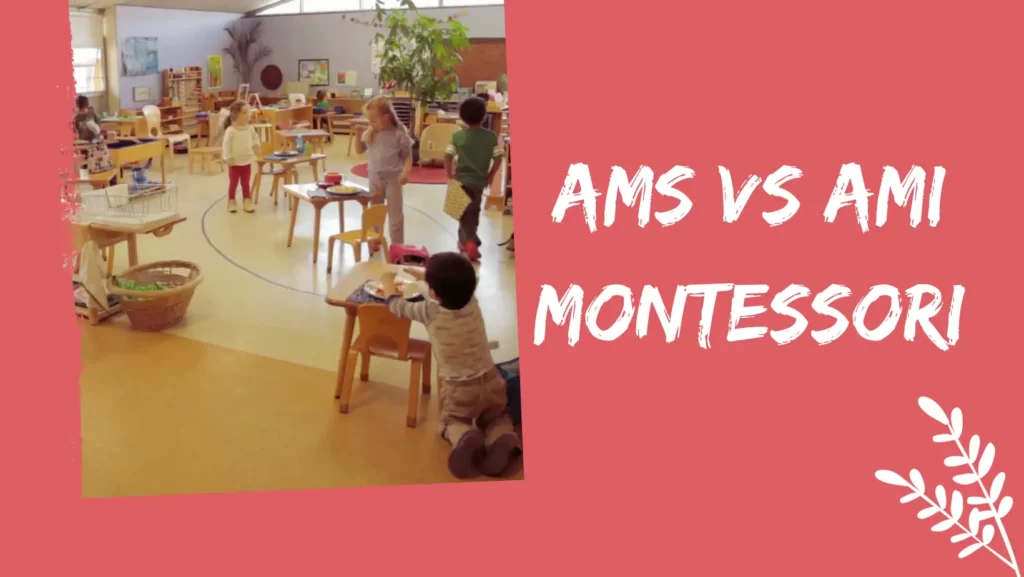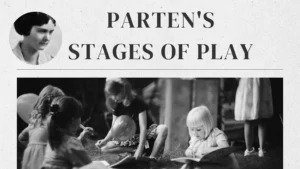In the world of early childhood education, Montessori stands out as a unique and effective method. Yet, within Montessori, there are two distinct branches – AMS vs AMI Montessori – each with its own approach and philosophy.
The two primary types of Montessori education are the Association Montessori Internationale (AMI) and the American Montessori Society (AMS). AMI represents the original teachings of Maria Montessori, emphasizing a traditional, rigorous approach to the Montessori method. AMS, on the other hand, offers a more Americanized version, blending Montessori principles with contemporary educational practices, making it more adaptable to various settings.
Montessori schools are educational institutions that follow the methodology and approach developed by Dr. Maria Montessori. These schools are located all over the world and have had a significant impact on the field of education.
Accreditation for Montessori schools is provided by two organizations: the American Montessori Society, founded by Nancy Rambush, and Montessori International Association, founded by Dr. Maria Montessori and her son Mario.
AMS Montessori and AMI are the two organizations that provide training and certification for the Montessori system.
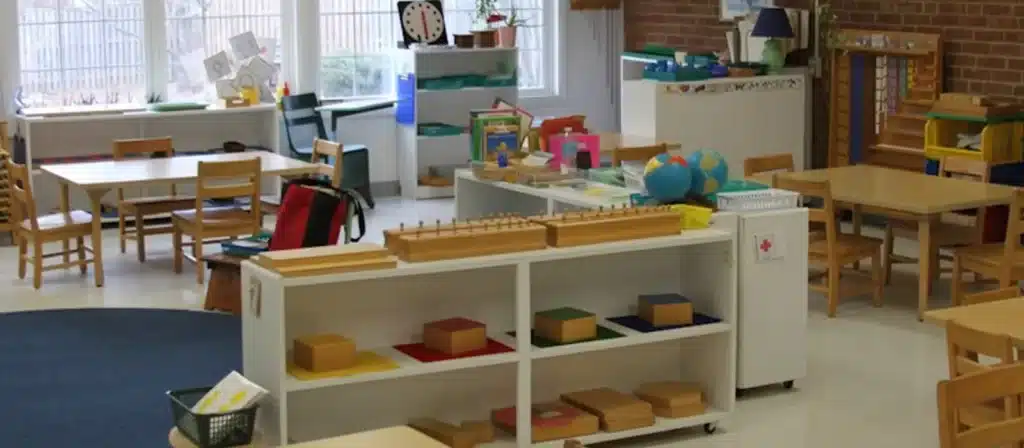
What is the Association Montessori Internationale or AMI?
The Association Montessori Internationale (AMI) was established by Dr. Maria Montessori in 1929 to maintain the integrity of her educational philosophy and pedagogical principles. AMI schools adhere closely to Montessori’s original teachings, focusing on the developmental stages of children and emphasizing respect, independence, and a love for learning.
In AMI classrooms, the environment is meticulously prepared to meet the developmental needs of children.The materials used are specific to the Montessori method and are designed to stimulate the child’s senses and encourage independent learning.Teachers in AMI schools undergo rigorous training, certified by AMI, ensuring they are well-equipped to facilitate an authentic Montessori learning experience.
Additionally, AMI schools emphasize mixed-age classrooms, a hallmark of Montessori education. This setup allows younger children to learn from older peers, fostering a community of learning and collaboration. Assessment in AMI schools is typically observational, with teachers monitoring each child’s progress and adapting the learning environment to meet their individual needs.
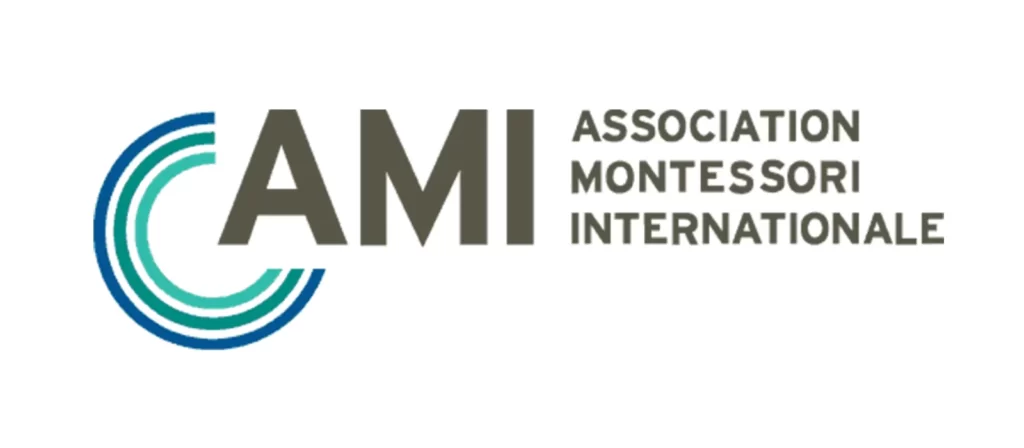
What is the American Montessori Society or AMS?
The American Montessori Society (AMS) was founded in 1960 by Nancy McCormick Rambusch, an educator who was instrumental in revitalizing interest in Montessori education in the United States. AMS represents a more modern interpretation of Montessori’s teachings, integrating them with current educational research and practices.
AMS schools are known for their flexibility in applying Montessori principles. While they embrace the core concepts of Montessori education, such as student-led learning and the prepared environment, they also incorporate contemporary teaching methods and materials. This approach makes AMS schools more adaptable to various educational standards and practices found in American schools.
Teacher training for AMS certification involves a comprehensive understanding of Montessori philosophy and methods, along with strategies to integrate these with other educational approaches. AMS also places a significant emphasis on community building and collaboration, both within the classroom and the wider school community.
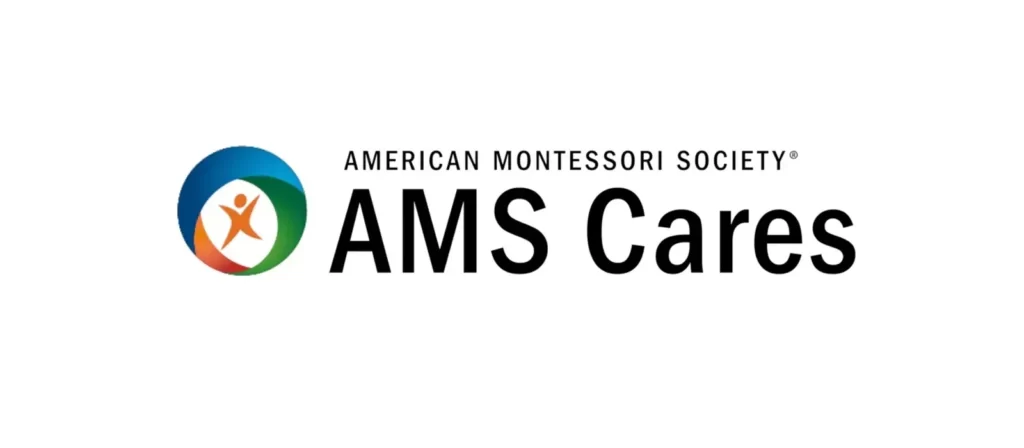
Difference Between AMS Vs AMI Montessori
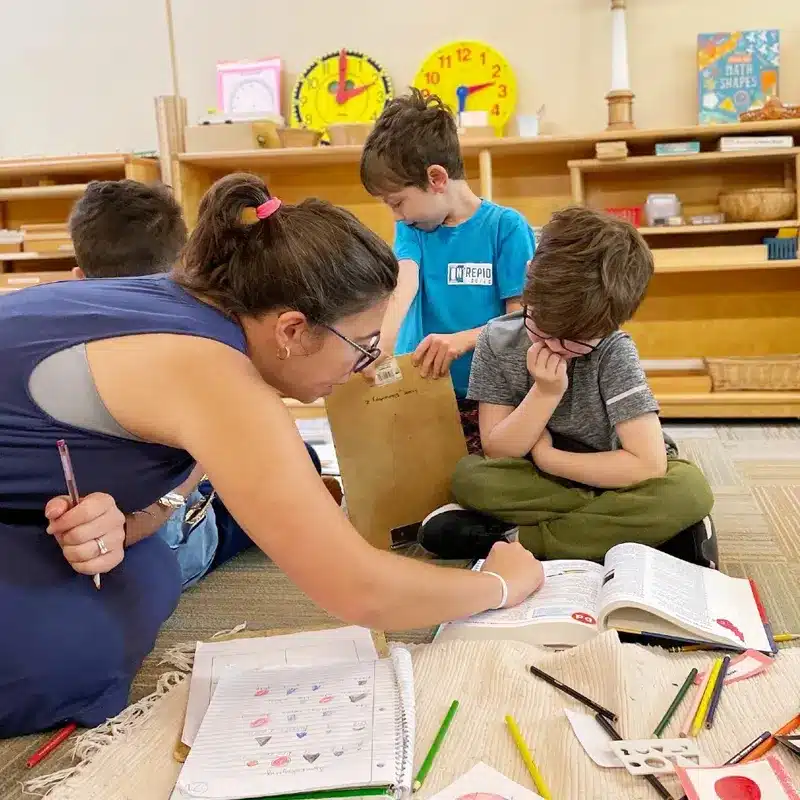
Curriculum
AMS schools often blend Montessori methods with contemporary educational practices. This amalgamation allows for a more adaptable curriculum that evolves with educational research and societal needs. In contrast, AMI schools adhere strictly to Montessori’s original curriculum, focusing on her time-tested methods without incorporating modern educational trends.
Teacher Training
Teacher training is another critical aspect that sets AMS and AMI apart. AMS-certified teachers are trained to integrate Montessori philosophy with a variety of teaching methods, preparing them to adapt to diverse classroom environment. AMI training is rigorous in its adherence to traditional Montessori techniques, ensuring that teachers are deeply immersed in Montessori’s original teaching philosophy.
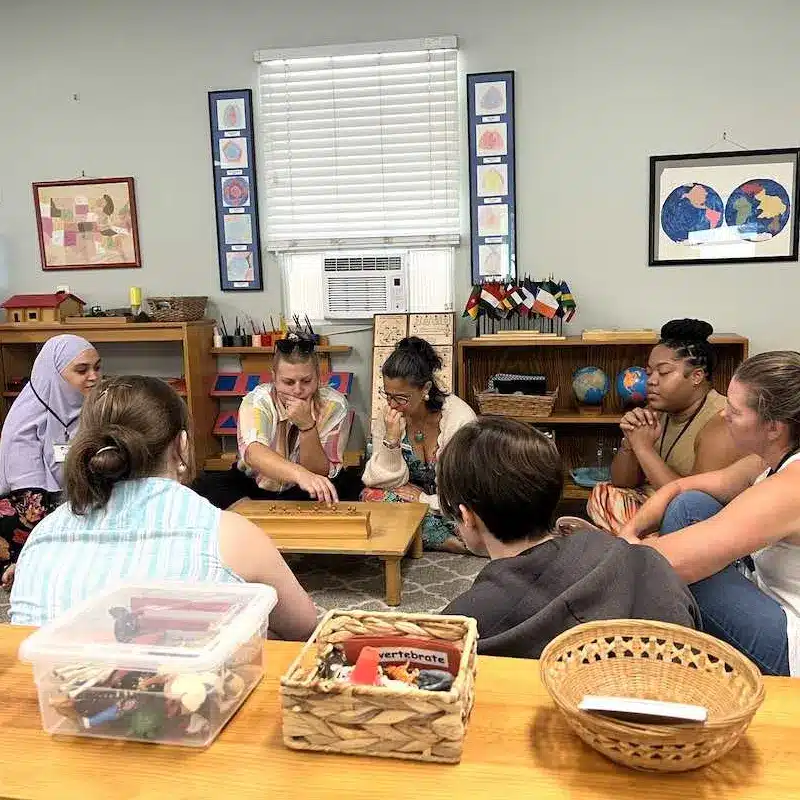

Mission and Vision
The mission and vision of AMS and AMI reflect their philosophical differences. AMS focuses on innovating and integrating Montessori education within the broader educational landscape. AMI remains dedicated to preserving and spreading Dr. Montessori’s original vision, emphasizing the developmental needs and natural learning pace of each child.
Compatibility
When it comes to compatibility with local educational standards and practices, AMS schools often have an edge due to their flexible curriculum. They can easily align with state and national educational standards. AMI schools, with their strict adherence to Montessori’s original model, may find this alignment more challenging but offer a pure Montessori experience.
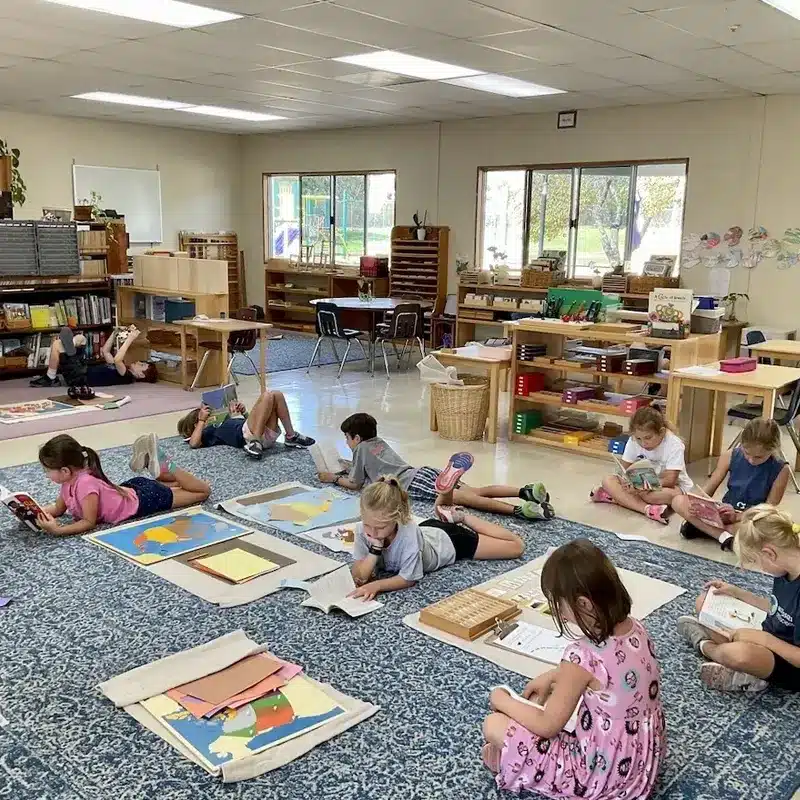
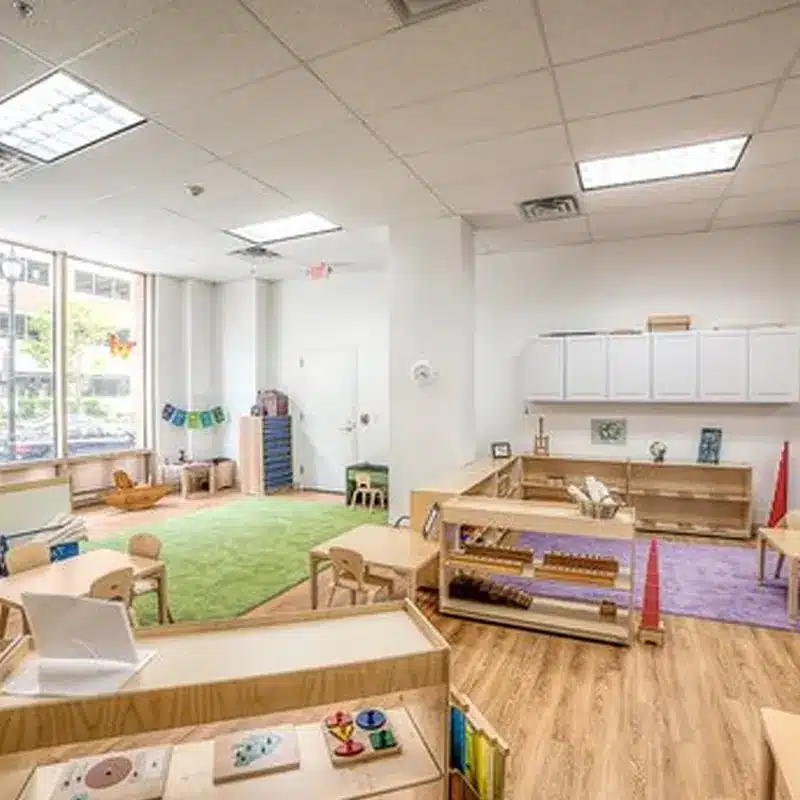
Facilities and Affiliated Schools
Lastly, the facilities and affiliated schools of AMS and AMI mirror their educational philosophies. AMS schools often feature a mix of traditional and Montessori-specific learning environments, while AMI schools are designed to fully embody Montessori principles in their physical space and teaching materials.
AMS vs AMI Montessori Training: How Are They Similar?
Despite their differences, both AMS and AMI training share fundamental similarities. Both training programs emphasize a deep understanding of child development, the importance of the prepared environment, and the role of the teacher as a guide rather than a traditional instructor.
In both AMS and AMI training, prospective teachers learn about the specific Montessori materials and how they are used to support children’s learning.
Both types of training also emphasize the importance of observation. Teachers are trained to observe students carefully to understand their needs and interests, allowing them to tailor the learning experience to each child. This individualized approach is a cornerstone of Montessori education, regardless of whether it falls under the AMS or AMI
Furthermore, both AMS and AMI place a strong emphasis on fostering independence, respect, and a love for learning in children. While their approaches to achieving these goals may differ, the underlying principles remain consistent across both types of Montessori education.
What is AMI certification?
This certification is granted by the Association Montessori Internationale, the organization founded by Dr. Montessori herself.
The process of obtaining AMI certification involves rigorous coursework, practical hands-on training with Montessori materials, and a deep dive into Montessori philosophy and child development theory. Candidates undergo extensive observation and teaching practice in AMI-affiliated classrooms, ensuring they have a practical understanding of how to implement Montessori methods.
AMI certification is recognized internationally and is often considered a benchmark for high standards in Montessori education.Montessori’s original vision. The certification process can vary in length, usually taking about one to two years, and it covers different age levels: Infant and Toddler (0-3 years), Primary (3-6 years), and Elementary (6-12 years).

Is AMI certification better than AMS?
The question of whether AMI certification is “better” than AMS certification is subjective and depends on individual perspectives and the specific needs of schools and students. AMI certification is often regarded as more traditional and closely aligned with Maria Montessori’s original teachings. It is known for its rigorous standards and a strong emphasis on the theoretical foundations of Montessori education.
On the other hand, AMS certification is recognized for its flexibility and incorporation of contemporary educational practices alongside Montessori principles. It is well-suited for educators who wish to blend Montessori methods with modern educational techniques and adapt to a variety of educational settings, especially in the American context.
Both certifications are highly respected in the Montessori community, and each has its strengths. The choice between AMI and AMS certification often comes down to personal educational philosophy, the type of Montessori environment one wishes to work in, and the specific needs of the students they plan to teach.
How do you get Montessori certified?
Getting Montessori certified involves a dedicated process of education and training, which varies depending on whether you are pursuing AMI or AMS certification.
For AMI certification, the process typically includes:
- Enrolling in an AMI-affiliated training center. These centers offer courses that cover Montessori philosophy, child development, and specific teaching methods for different age groups.
- Completing academic coursework, which involves studying Maria Montessori’s theories and principles, as well as the curriculum and pedagogical approaches for the specific age group you intend to teach.
- Gaining practical experience with Montessori materials and techniques through hands-on training sessions.
- Completing a certain number of observation and student-teaching hours in an AMI-recognized Montessori classroom.
- Passing written and oral examinations to demonstrate your understanding and ability to apply Montessori principles and methods.
For AMS certification, the process typically includes:
- Enrolling in an AMS-affiliated teacher education program. These programs also cover Montessori philosophy and pedagogy, tailored to the American educational context.
- Completing academic and practical coursework, which includes learning about Montessori materials, classroom management, and curriculum planning.
- Fulfilling a student-teaching internship, which involves working under the supervision of a certified Montessori teacher.
- Completing a comprehensive portfolio and passing examinations that assess your understanding of Montessori methods and your ability to implement them in the classroom.
Both paths require a commitment to understanding and implementing the Montessori philosophy, and each path prepares educators to provide high-quality Montessori education. The choice between AMI and AMS certification largely depends on your educational philosophy and the type of Montessori environment you aim to work in.
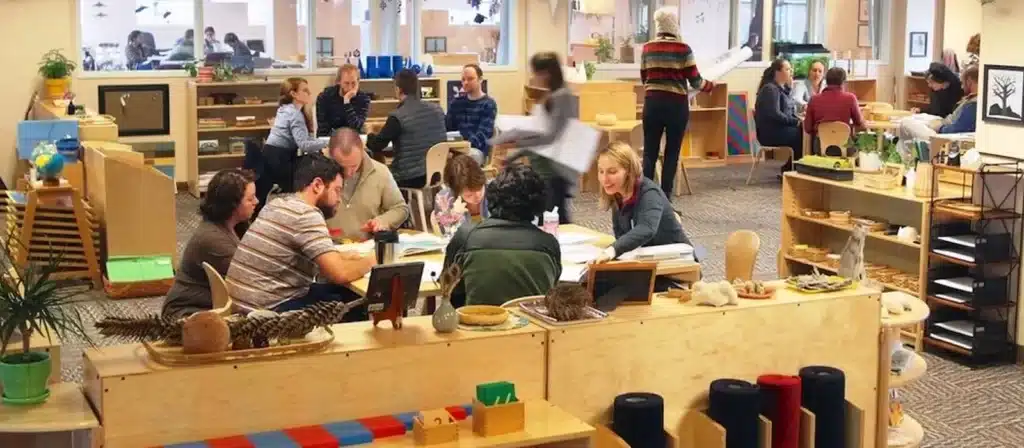
Conclusion
In summary, understanding the differences between the Association Montessori Internationale (AMI) and the American Montessori Society (AMS) is crucial for anyone considering Montessori education.
AMI represents the traditional, original form of Montessori, strictly adhering to Dr. Maria Montessori’s methods and philosophies. It emphasizes a structured environment, specific Montessori materials, and a strong focus on individual learning and development. In contrast, AMS offers a more flexible approach, blending core Montessori principles with modern educational practices, making it adaptable to various educational systems. While both types of Montessori education aim to foster independence, respect, and a love for learning in children, they do so in slightly different ways.
Ultimately, the choice between AMI and AMS depends on one’s educational goals and preferences, highlighting the importance of understanding these two distinct approaches to Montessori education.

